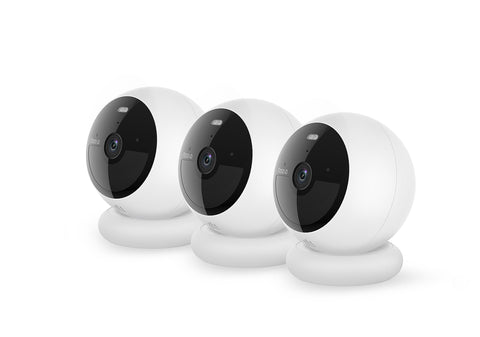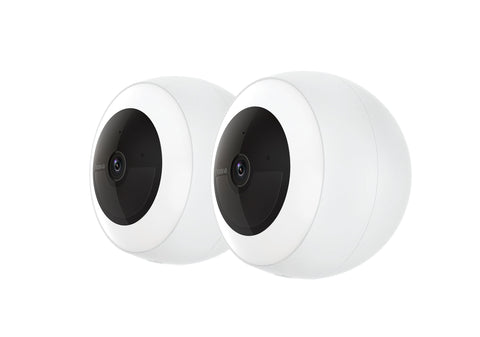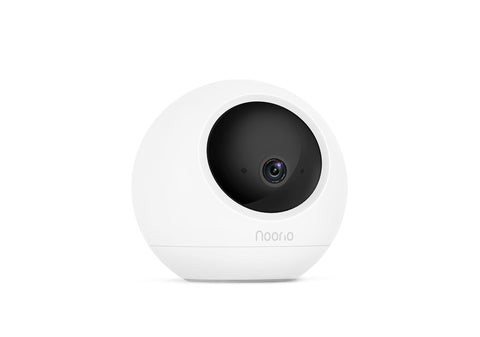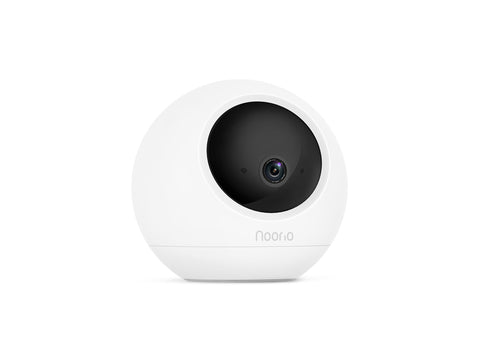Fire prevention and safety should be a top priority for every homeowner. According to the National Fire Protection Association (NFPA), U.S. fire departments responded to 1.35 million home fires in 2021. These fires caused 3,800 civilian fire deaths, 14,700 reported civilian fire injuries, and about $15.9 billion in property damage. With proper precautions and safety devices, many of these fires and their consequences could have been prevented. In this blog post, we will provide tips on preventing fires in the home and recommend fire safety devices that every home security system should have.
Preventing Home Fires
The first line of defense against home fires is prevention. Here are some tips on how to minimize fire risks:
- Practice safe cooking habits. Stay in the kitchen when frying, grilling, or broiling food. Keep anything that can catch fire, like oven mitts, wooden utensils, food packaging, and towels, away from the cooking area. Avoid loose-fitting clothing that can catch fire. Turn the pot handles inwards on the stove to prevent accidental bumps.
- Avoid overloading electrical outlets. Do not plug too many appliances into one outlet, as this can lead to overloaded circuits and cause overheating. Use surge protectors when plugging in multiple devices.
- Inspect electrical cords regularly. Replace any cords that are cracked, damaged, or loose fitting. Do not run cords under rugs or furniture, as this can cause damage.
- Use space heaters safely. Keep them at least 3 feet away from any flammable materials such as curtains, upholstery, or paper. Turn off and unplug when not in use.
- Extinguish candles and fires completely. Never leave burning candles or fires in fireplaces unattended. Make sure embers are completely extinguished before going to bed.
- Clean lint filters in the clothes dryer after each use. Lint buildup can cause fires inside the dryer. Ventilate the dryer outside to prevent moisture and lint from accumulating indoors.
- Avoid smoking indoors. Provide proper cigarette disposal receptacles outdoors. Soak butts completely before throwing away.
- Store flammable materials properly. Keep paint, solvents, and gasoline in their original containers and store them away from any ignition sources.
- Maintain smoke and carbon monoxide alarms. Test monthly and replace batteries yearly. Interconnect alarms for whole home coverage.

Home Fire Safety Devices
In addition to fire prevention, having proper safety devices in the home can alert occupants to fires early and allow safe escape. Here are some recommended fire safety devices for a home security system:
- Smoke Alarms: Smoke alarms are the first essential line of defense for home fire safety. They detect smoke and sound an alarm to alert occupants of a potential fire. The NFPA recommends installing smoke alarms on every level of the home, inside each bedroom, and in hallways outside bedrooms. Opt for alarms with 10-year sealed batteries or hardwired alarms with battery backup. Interconnect smoke alarms so that when one sounds, they all activate. Read to get more tips: Installing and maintaining smoke alarms.
- Carbon Monoxide Detectors: Carbon monoxide (CO) is an odorless, colorless gas that can be deadly. CO detectors sound an alarm if unsafe levels of the gas are present, allowing occupants to escape and ventilate the home. Install CO detectors on every level and outside each sleeping area. Choose detectors that meet UL 2034 safety standards.
- Fire Escape Ladders: Fire escape ladders provide a secondary exit from upper levels in case stairwells are blocked. They come with hooks to hang out of windows and strong, heat-resistant rungs. Store near windows in upper-level bedrooms. Choose ladders rated for the height at which they will be used. Practice proper safety and techniques when using.
- Fire Extinguishers: Handheld fire extinguishers allow small fires to be put out before they grow out of control. Keep an ABC-type extinguisher in the kitchen, garage, laundry room, and basement. Check pressure gauges monthly and service annually. Make sure all adult occupants know how to PASS - Pull, Aim, Squeeze, Sweep when operating.
- Emergency Escape Masks: Escape masks or hoods filter out smoke particles, allowing safer breathing and visibility when exiting a burning home. Stash NIOSH-approved emergency masks that provide 15 minutes of protection near each sleeping area. Make sure all occupants, including children, know how to properly wear and use masks.
- Monitored Fire and Smoke Detection Systems: For whole home fire protection, a monitored alarm system with 24/7 professional monitoring is recommended. Smoke, heat, and carbon monoxide detectors installed throughout the home all connect to a main alarm panel. If any detector goes off, the panel sends instant alerts to the monitoring center, which contacts emergency responders on your behalf. This ensures fires are handled quickly, even when homes are unoccupied.
- Smart Devices: Smart smoke detectors, thermostats, and lighting can be integrated with home security systems. Smart smoke detectors can send alerts to phones to notify homeowners of potential fires wherever they are. Smart thermostats can automatically shut off HVAC systems if smoke is detected to prevent circulation. Smart lighting can flash to guide occupants out safely.

Other Home Safety Devices
Here are some additional recommended home safety devices that can integrate with a comprehensive home security system to provide robust protection:
- Home Surveillance Cameras: Strategically installing high-definition security cameras around the exterior and interior of your home enables real-time monitoring of any suspicious activity. Outdoor cameras placed at entryways and perimeter fence lines provide a visual deterrent and allow quick detection of trespassers. Indoor cameras keep watch over valuables and high-traffic areas while giving homeowners peace of mind. With user-friendly apps, homeowners can conveniently access live or recorded footage on smartphones from anywhere. To access more tips: 8 Tips to Pick a Better Home Security Camera.
- Burglar Alarm Systems: Sophisticated burglar alarm systems employ an array of sensors to identify any unauthorized entry points into the home. Motion detectors and door and window contact sensors instantly detect opening attempts and transmit signals to the control panel. The control panel then triggers loud audible alarms and alerts the professional monitoring center to dispatch law enforcement. Select systems also incorporate glass break sensors and pressure mats for enhanced security. Discover more: 6 Expert Tips to Prevent Motorcycle Theft.
- Panic Buttons: Conveniently mounted panic buttons in multiple rooms or portable handheld fobs provide homeowners with a way to manually trigger the alarm system in the event of an emergency. When pressed, the panic buttons activate the onsite siren and immediately notify the security provider's monitoring center to send emergency personnel. This allows for a swift emergency response even when residents are unable to make a phone call. Click to know more: 10 Best Security Gifts For Moms Living Alone! Safe & Independent.
- Smart Door Locks: Door locks integrated with keypads, biometrics like fingerprint or facial recognition, or Bluetooth mobile connectivity balance security and convenience for homeowners. They allow easy access for family and friends while securing entrances from unwanted intruders. Features like tamper alerts and activity logs sent to the homeowner's smartphone keep them informed of comings and goings.
- Flood Sensors: Strategically installed around plumbing fixtures, appliances, sump pumps, and other leak-prone areas, flood sensors provide an early warning of water leaks before catastrophic damage occurs. Once activated, they can automatically shut off water valves and send real-time alerts to homeowners. This prevents large-scale flooding and mitigates water damage.
- Temperature Monitors: Smart thermostats and standalone temperature sensors throughout the home enable constant monitoring of ambient temperatures. Homeowners can receive mobile alerts for any extreme highs or lows that could lead to pipe bursts, mold or endanger children and pets. This allows early preventative actions.

Conclusion
With vigilance about fire prevention and investment in proper home fire safety devices, homeowners can significantly reduce their risk. With customized, professionally installed security equipment seamlessly integrated and actively monitored around the clock, homeowners can trust that their property and loved ones remain protected 24/7. Robust home security systems tailored to one's unique needs deliver complete peace of mind.












1 comment
I appreciate you informing us that smoke alarms are known to be the first essential line of defense for home fires since they can sound an alarm to warn us immediately once they detect smoke. I live with my two kids alone in Reno, and since I have been hearing news about house fires in our area recently, I want to be prepared for such emergencies in the future. I’ll be sure to keep this in mind while I look for fire services in Reno to hire for the fire protection installation my house needs soon. http://www.allprosecurityinc.com/fire-alarm-systems